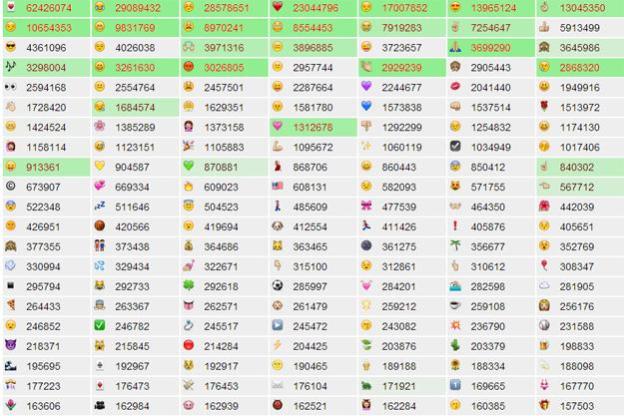
When posting your innermost thoughts on social media, when mere words aren’t enough (including made-up ones) and links to photos of your facial expressions are skipped over by your friends, the best way to convey how you feel is through the use of emoticons, also more popularly known by its Japanese translation, emojis. This has already been proven by the fact that a simple smiley (or lack thereof) can modify the meaning behind a simple text message, and when used online, emojis can even tell your online audience more than just your feelings Livejournal style – you can let them know what you’re up to by appending your Facebook statuses and Twitter updates with tiny pictures of sports paraphernalia, vehicles, beverages, and a whole slew of other possibilities.
Interested to find out what emojis are showing up on Twitter the most? Somebody thought it would be interesting and cool (and yes, we agree) to track all of Twitter’s emoji activity visually in real time. The Emoji Tracker is quite a sight to behold and is updated so instantaneously that users are greeted by an epilepsy warning on their first visit.

“Most of my side-projects are simply motivated by a desire to explore a new technology,” says Emoji Tracker creator and social technologist Matthew Rothenberg, who made his Twitter experiment’s code available through Github, in case anyone tech-savvy enough to program can help make the service better. “I’d done a few previous projects involving analyzing Twitter data in realtime, and I was trying to think of something to take it to a larger scale. I’ve always been most fascinated by the social aspects of how people use technology, and the explosive popularity of emoji has been interesting to watch.”
How does the Emoji Tracker keep count of its results and what happens with the information? According to Rothenberg, right now, raw counts as well as the 100 most recent tweets for each emoji symbol available are kept in Redis, a data store optimized for rapidly changing data, but he says he has future plans of also storing historical trends so one could see how things evolve over time.
Rothenberg says he first turned the Emoji Tracker on during the evening of July 4, and of course, the :fireworks: page was at its finest:

Of all the emoji symbols listed on the Emoji Tracker site (there are a total of 842), the most popular one by far is the Black Heart Suit, as expected.

As fun as the Emoji Tracker is, there are also some surprising revelations about what emojis are wildly popular:
1. Information Desk Person (ranked #20): I guess the fact that it’s an adequate representation of “So what?” or “Whatever!” is why it’s one of the more widely used emoticons on Twitter. Also, there are a lot of information desk people ranting on Twitter at any given time.

2. See-no-evil Monkey (ranked #27): Seriously, Twitter? I guess it’s cuter than (>_<).
3. Pile of poo (ranked #88): Because life is nothing but a steaming heap of fresh dung (never mind that from afar, the emoticon resembles a Hershey’s Kiss).
4. Ghost (ranked #168): Of course it’s inevitable for this emoticon to accompany a tweet with a Ghostbusters reference. Also, it’s for those times you feel like ectoplasm… which happens all the time. May also be used mostly by Snapchat lovers since it looks a lot like its logo.

5. Floppy Disk (ranked #728): Clearly, the only people who use this emoji on Twitter are at least age 25. It’s sort of sad that the only live tweets caught by Emoji Tracker using this are ones that aren’t really talking about the floppy disk. (Side note: You can still buy floppy disks! Whoa.)



